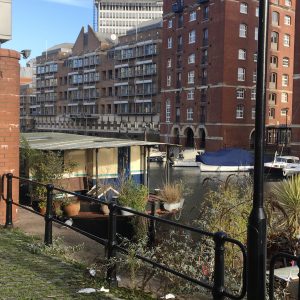Yo, mofos and ototos!
Oi, oi! This is just too-too for Hulu! If you’re chatting with a go-go dancer playing with a yoyo solo in Kokomo, or wearing a kimono in Beaudo visiting with ScoMo (who’s no bozo) and Joe Rokocoko about CoCo bonds or lobo loans pro bono from MoFo or the crisis with NoKo, here’s the low-do to write a promo in bopomofo quomodocumque (to publish in HoPoS):
Saw FloJo and schlomo toe-beau toy-boy BoJo, fresh from Xoyo, at a HoJo in SoHo go bomo poco a poco with Coco and majordomo Tojo (ignoring kodo-ha) – listening to Moloko, Kokoroko and El Topo play joropo on the koto and the shoko, singing in SeSotho about the dodo, with kokoro. Have robophoto, but it’s no podo. Their ro-ro pogo is to eat faux pho, fro-yo, choko gateaux and an iced vo-vo at a toro table while drinking toso at smoko with the Poqo povo at Xoxo listening to Radio Station Kozo, and later watching a slo-mo doco about Hagoromo in mono with Koko, Komo, Mo-Do, a hobo and okomo Perry Como in the so-so rococo Po-Mo rojo bobo boho lodo BoCo CoCo gogo dojo, “Spodo Komodo“. Bolo.
Fogo? No no, fomo! Whaumau! Indeed, fomo con moto! With added mojo! paMoto! Yolo! Makorokoto! OTOH, they’re loco about their okoto. So, nodo, RoPo popo, no no. Loto.
Domo arigato. XOXO.
KEY:
Yo – Hey (salutation)
mofos – mother f***ers
ototos – younger brothers
Oi, oi – Hey (salutation, ancient Greek)
too-too – overly
Hulu – American video-on-demand service
go-go dancer – nightclub danced employed to entertain patrons
yoyo – child’s toy
solo – alone
Kokomo – a city in Indiana
kimono – Japanese garment
Beaudo – Beaudesert, Queensland
ScoMo – Scott Morrison, Australian politician, now Prime Minister
bozo – idiot
Joe Rokocoko – New Zealand rugby union player
CoCo bonds – Contingent Convertible bonds
lobo loans – lender option, borrower option loans
pro bono – for the good of the public (Latin)
MoFo – US law firm Morrison and Foerster
NoKo – North Korea
low-do – low down
promo – promotion
bopomofo – a transliteration system for Chinese
quomodocumque – in whatever fashion (Latin)
HoPoS – Journal of the History and Philosophy of Science
FloJo – Florence Griffith-Joyner, American athlete
schlomo – lazy person
toe-beau – foot-fetishing lover
toy-boy – younger male lover
BoJo – Boris Johnson, British politician
Xoyo – a nightclub in London, England
HoJo – Howard Johnson (hotel chain)
SoHo – South of Houston street, area of Manhatten
bomo – black out make out (kissing or petting while intoxicated)
poco a poco – little by little (Italian)
Coco – character in 2017 Pixar/Disney animated movie
majordomo Tojo – Hideki Tojo, Japanese military leader and Prime Minister
kodo-ha – imperial doctrine (Japanese)
Moloko – English pop duo
Kokoroko – London, UK, Afrobeat group
El Topo – Puerto Rican musician, Antonio Cabán Vale
joropo – creole musical style from Venezuala and Columbia
koto – Japanese stringed instrument
shoko – Japanese gong
SeSotho – the language of Lesotho
dodo – flightless bird
kokoro – emotions, feelings (Japanese)
robophoto – automated photo
podo – pants down
ro-ro – stupid person or behaviour
pogo – making fun of someone behind their back
faux – false (French)
pho – a type of Vietnamese soup
fro-yo – frozen yogurt
choko – a type of vegetable, common in Australia
gateaux – a cake
iced vo-vo – a type of biscuit in Australia
toro – a tree from New Zealand
toso – spiced sake (Japan)
smoko – smoking break (Australian)
Poqo – the armed wing of the Pan-African Congress of South Africa
povo – the people (Zimbabwe, from the Portuguese)
Xoxo – an arts festival in Portland, Oregon
Radio Station Kozo – radio station in Branson, Missouri
slo-mo – slow motion
doco – documentary
Hagoromo – a Japanese Noh play
mono – a single audio stream
Koko – a gorilla who knew sign language (died 2018)
Komo – Nigerian-British rap artist
Mo-Do – Maureen Dowd, American journalist
hobo – homeless person
okomo – a very fine person
Perry Como – American singer
so-so – mediocre
rococo – excessive late Baroque style
Po-Mo – Post Modern
rojo – vulgar fashion
bobo – bourgeois bohemian
boho – bohemian
lodo – Lower Downtown, precinct of Denver, Colorado
BoCo – Boulder, Colorado
CoCo – Co-creative co-working space
gogo – energetic, upbeat (a style of music with non-stop drum beats across multiple songs)
dojo – martial arts studio
”Spodo Komodo“ – a priest mentioned by Mrs Doyle in the Christmas Special of Channel 4 TV series Father Ted
Bolo – Be on the look out
fogo – fear of going out
fomo – fear of missing out
whaumau – fomo (Maori)
con moto – with motion (Italian)
mojo – personal power, force
paMoto – on fire (chiShona)
Yolo – you only live once
Makorokoto – Congratulations (chiShona)
OTOH – on the other hand
loco – mad
okoto – achieving one’s life’s passion
nodo – nothing doing
RoPo – Rohnert Park, California
popo – the police
Loto – Lock out, tag out
Domo arigato – Thankyou (Japanese)
XOXO – Love and Kisses
